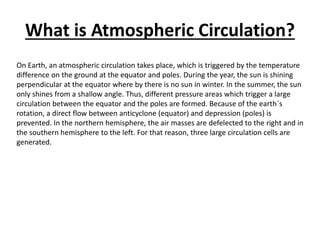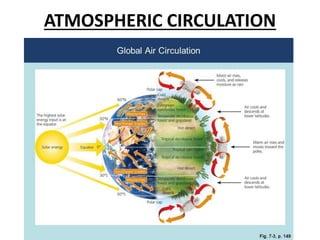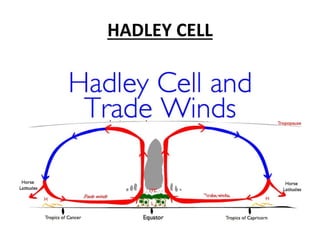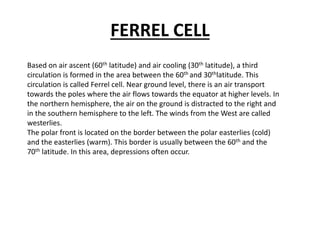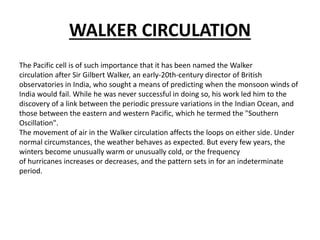Atmospheric circulation is triggered by temperature differences between the equator and poles caused by uneven solar heating. This leads to three large circulation cells in each hemisphere - the Hadley, Ferrel, and Polar cells. The Hadley cell involves air rising at the equator, flowing poleward and descending at 30 degrees latitude, leading to subtropical deserts. The Ferrel cell circulates air between 30-60 degrees latitude. The Polar cell involves air rising at 60 degrees and descending over polar areas.

